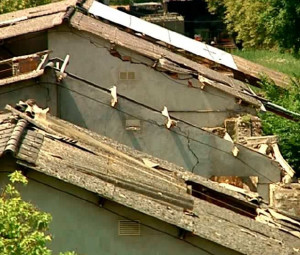At a pyrotechnics plant, 5.6 kg of an HMX/Viton mix detonated around 9:25 am during compression, causing the deflagration of 14 kg of powder explosive held in a barrel. Detonation occurred upon reaching maximum compressive force in a high-capacity isostatic press, destroying the press and all cell contents, seriously damaging the building roof, and scattering shattered window panes outside the building. Although shocked by the explosion, technicians working in the control room behind the reinforced walls and armoured doors walked away uninjured thanks to the site’s level of protection. They sounded the alarm; the internal emergency plan was triggered at 9:40.
Fire and rescue services established a safety perimeter and, as a precautionary measure, flooded the targeted cell with water first and then foam through the thermal expansion chimneys. This flooding operation was completed around 1:40 pm and the emergency response team left the site. Temperature monitoring of the premises using a thermal camera was scheduled for the next day.
Several potential causes were forwarded: adiabatic compression of the air present in the powder explosive, an electrostatic discharge or the presence of a foreign substance in the explosive composition. The effects matched the conclusions drawn in the safety report. Additional studies would be conducted on the level of electrostatic charges within this explosive. The use of uniaxial compression would be limited to producing charges no larger in size than those that yielded the initial feedback.
Download the detailed report in .pdf format (663 Kb)




